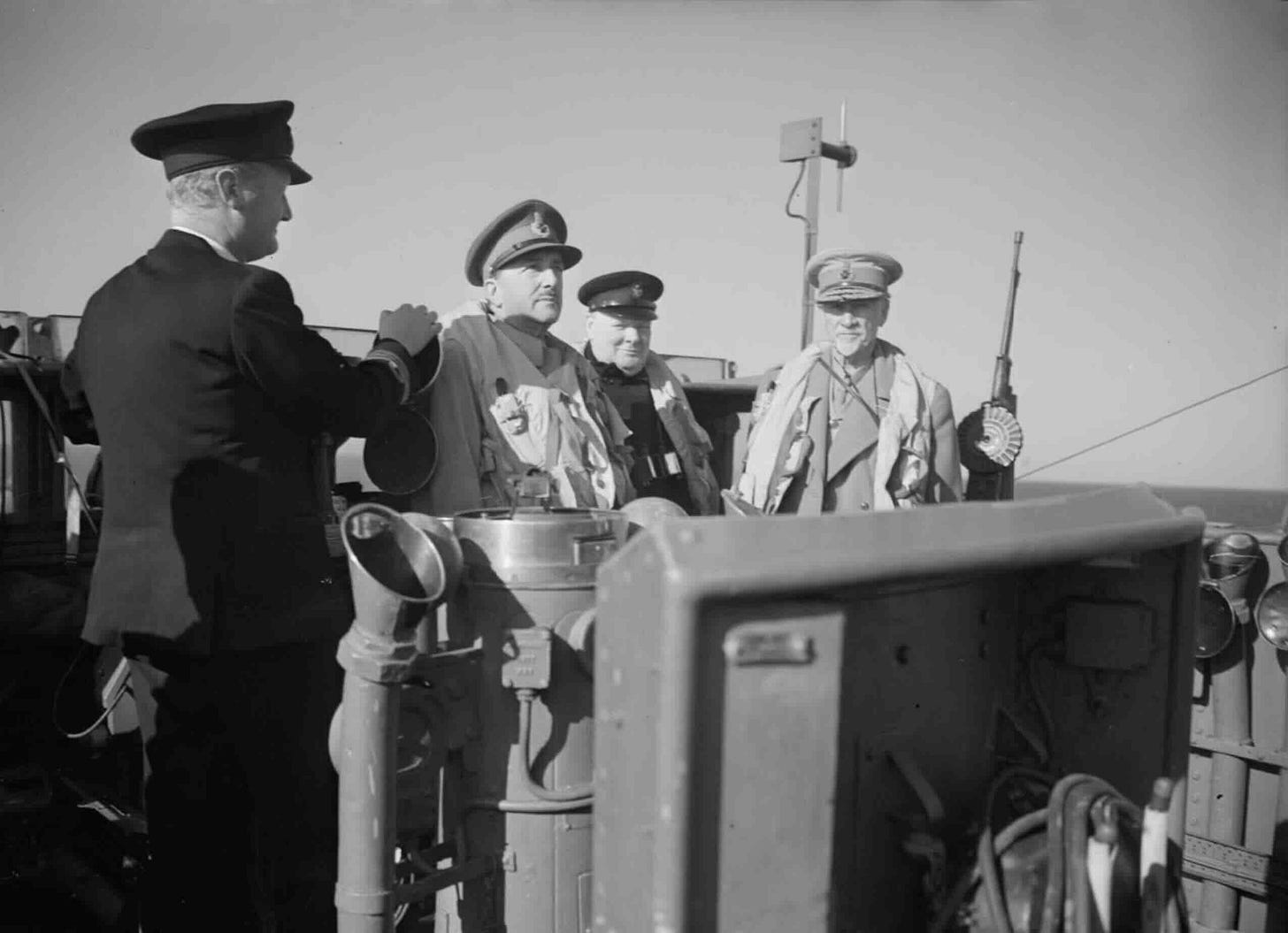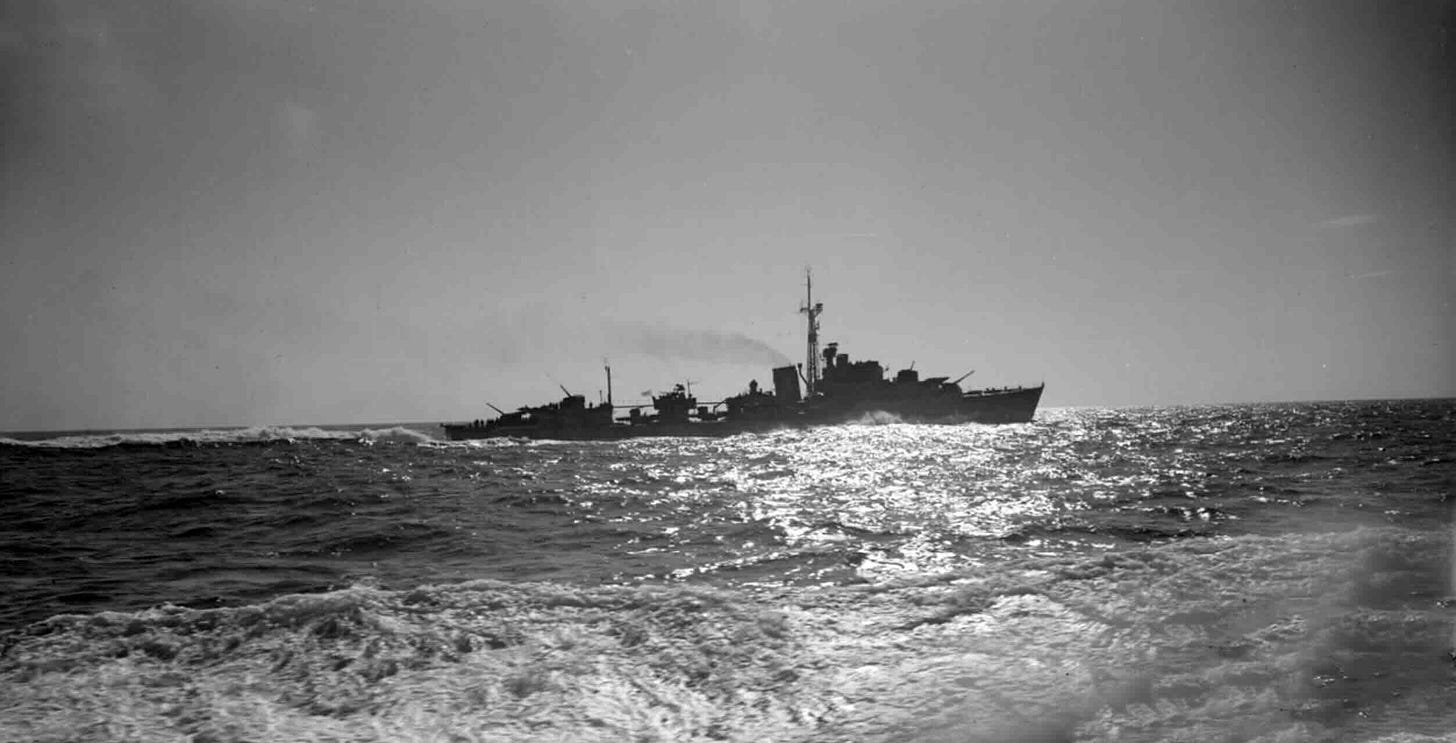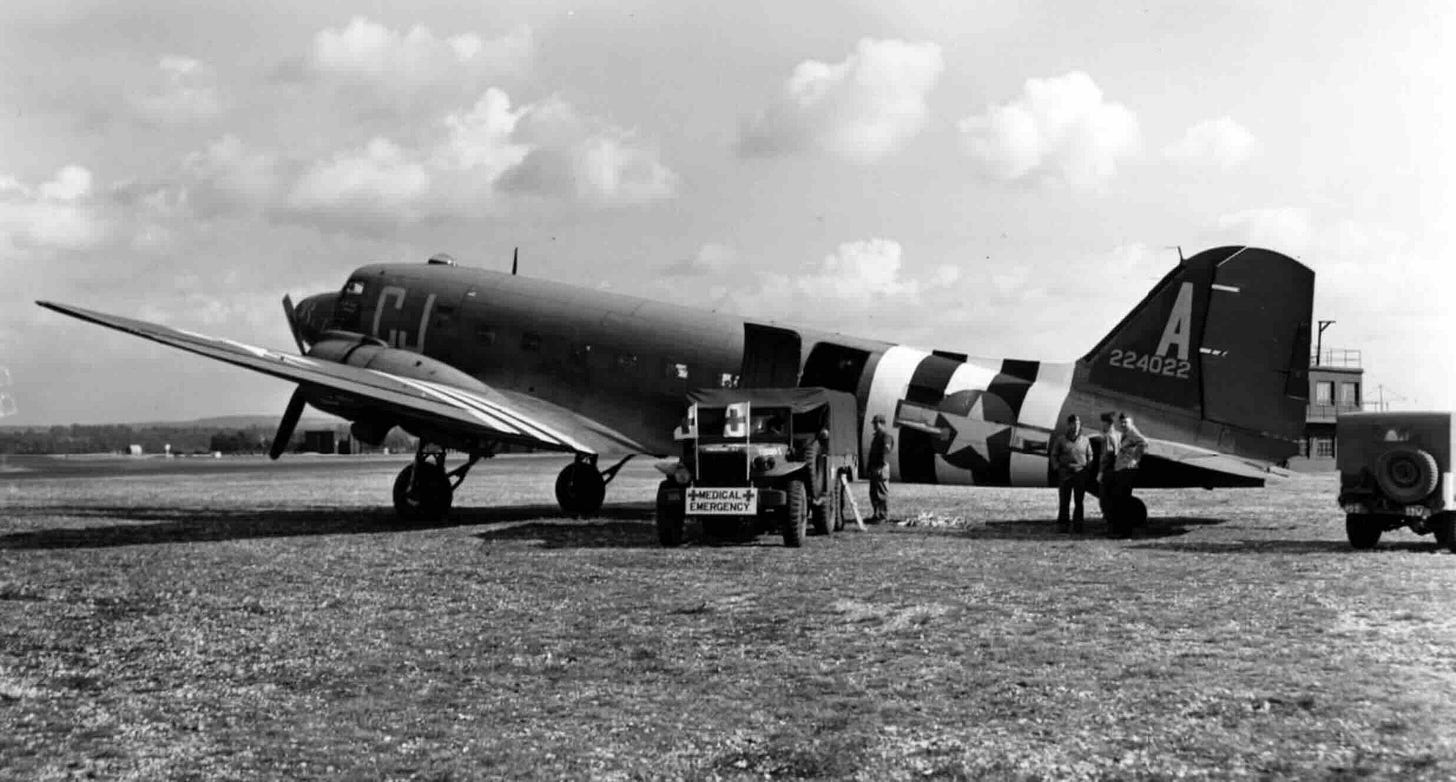A day trip to Normandy
12th June 1944: An impatient Churchill crosses the Channel to visit Montgomery and see the building of the Mulberry harbours


Winston Churchill had wanted to accompany the invasion forces on D-Day itself, and had to be dissuaded by the King. He would not allow the visit to be delayed much longer.
On the 12th June, the bridgehead in Normandy was still only a few miles deep and still under shellfire and occasional air attack. Not very far inland, clashes with Panzer units were becoming more serious. Less than a week after the invasion the commanders in the field might be presumed to be fairly busy.
None of this deterred Churchill. He was accompanied by Sir Alan Brooke1, Chief of the Imperial General Staff who recorded the day in his diary:
[The Prime Minister's party left the train at] 7.30 am to catch the destroyer Kelvin and leave Portsmouth at 8 am. The Americans had already started in a separate party. We had a very comfortable journey over and most interesting. We continually passed convoys of landing craft, minesweepers, bits of floating breakwater (Phoenix) being towed out, parts of the floating piers (Whales) etc. And overhead, a continuous flow of planes going to and coming from France.


About 11 am we approached the French coast and the scene was beyond description. Everywhere the sea was covered with ships of all sizes and shapes, and a scene of continuous activity. We passed through rows of anchored LSTs and finally came to a ‘Gooseberry’, namely a row of ships sunk in a half crescent to form a sort of harbour and to provide protection from the sea.
Keep reading with a 7-day free trial
Subscribe to World War II Today to keep reading this post and get 7 days of free access to the full post archives.

